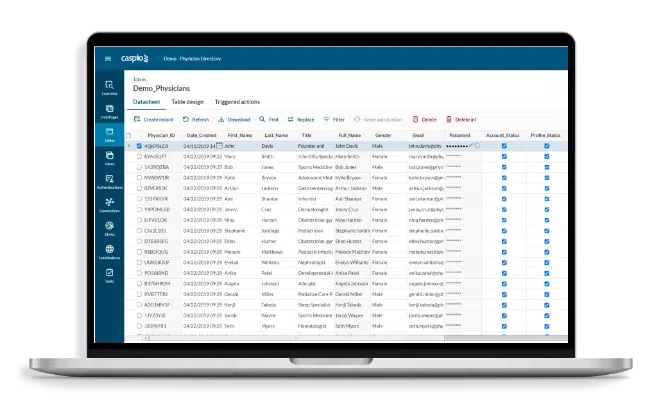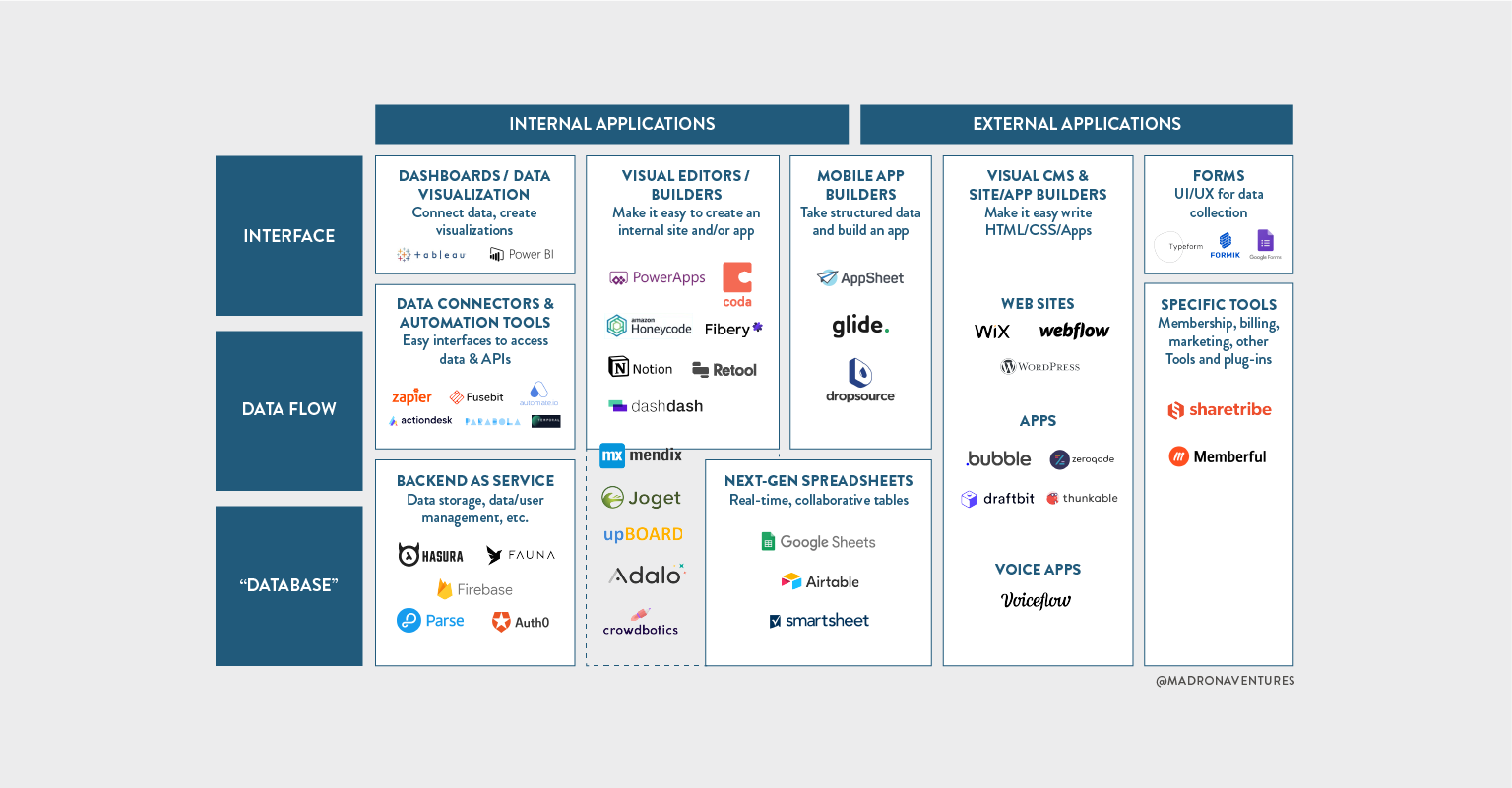Uncomplicated Open System Data Source Production Making Use Of No-Code Technology
Uncomplicated Open System Data Source Production Making Use Of No-Code Technology
Blog Article
Discover Just How Scalable Data Sources Can Be Used Without Coding to Enhance Your Service Operations
In today's busy company setting, the capacity to handle and analyze information efficiently is vital. Scalable databases, specifically when matched with no-code remedies, provide a transformative strategy that empowers non-technical users to enhance procedures. By employing devices that require no coding knowledge, companies can improve their functional capacities while reducing reliance on IT sources. However, the actual inquiry depends on comprehending exactly how these remedies can be customized to details company requirements and what prospective difficulties might occur in their execution. Exploring these aspects can illuminate the course to functional quality.
Understanding Scalable Data Sources
Scalable databases are crucial for modern service procedures, allowing organizations to effectively take care of increasing volumes of information without giving up efficiency. These data sources are created to adjust and grow to the changing needs of an organization, making sure that they can deal with larger datasets and even more complicated questions as organizational requirements evolve.
Recognizing scalable databases includes identifying their two primary types: vertical scaling and straight scaling. Upright scaling, or "scaling up," entails including even more power (CPU, RAM) to an existing web server to boost performance. On the other hand, straight scaling, or "scaling out," involves adding a lot more web servers to disperse the lots, which frequently leads to higher flexibility and fault resistance.
An additional critical facet is the style of scalable data sources, which can be either relational or non-relational. Relational data sources, such as MySQL and PostgreSQL, are structured and make use of SQL for questions, while non-relational data sources, like MongoDB and Cassandra, use more flexibility with unstructured data.
Ultimately, understanding scalable data sources is essential for services intending to leverage information as a calculated asset, enabling them to remain affordable in an increasingly data-driven setting.

Advantages of No-Code Solutions
Unlocking the potential of no-code solutions equips businesses to improve procedures and enhance efficiency without the requirement for extensive programming understanding. These systems allow non-technical individuals to develop, change, and manage databases effortlessly, thus equalizing accessibility to technology across teams.
One of the key advantages of no-code solutions is their speed of application. Services can promptly release applications and automate processes, significantly minimizing the moment invested on growth cycles. This dexterity makes it possible for organizations to respond quickly to market modifications and client demands, cultivating an affordable side.
In addition, no-code systems lower dependence on IT divisions for daily jobs, allowing technological groups to concentrate on even more complicated jobs that require specialized abilities. This shift not just enhances resource appropriation but additionally advertises technology within the company.
Cost-effectiveness is one more advantage, as no-code services can lower development and upkeep expenditures. By minimizing the requirement for coding knowledge, companies can harness the capabilities of their existing labor force without the expenses of hiring added employees.
Popular No-Code Database Tools
The surge of no-code remedies has led to that site the development of various data source see this site devices that cater to businesses looking for performance and access. These devices empower customers with restricted technical proficiency to produce, manage, and control data sources seamlessly.
Caspio stands out for its capacity to construct internet applications with no coding. It enables services to produce robust databases and deploy applications quickly, satisfying numerous market needs. In a similar way, Knack provides effective data and user-friendly interfaces monitoring abilities, enabling companies to build custom applications customized to their process.

Usage Cases in Company Workflow
How can companies take advantage of database tools to enhance their procedures? Scalable data sources supply organizations with effective capabilities to manage and analyze information without the requirement for substantial coding understanding. These devices can simplify different company processes, inevitably causing enhanced performance and performance.
One noticeable usage situation is customer partnership administration read what he said (CRM) Services can use scalable databases to track consumer interactions, preferences, and responses, allowing customized communication and far better service. By systematizing this details, groups can work together better and react to client needs in real-time.
An additional significant application is supply management. Firms can employ no-code data source tools to keep an eye on stock degrees, track deliveries, and projection need. This makes sure optimal stock degrees, decreases waste, and decreases stockouts.
In addition, job monitoring can gain from scalable databases by permitting teams to handle tasks, target dates, and resources in a linked platform. With real-time updates and data visualization, task managers can make educated decisions.
Beginning With Implementation
Applying scalable data sources in organization procedures calls for a structured strategy to guarantee effective integration and usage. The primary step is to conduct a thorough requirements assessment, determining certain organization requirements, data types, and anticipated growth patterns. This fundamental understanding will certainly guide the selection of the appropriate database option.
Following, select a straightforward, no-code data source system that aligns with your operational goals. no-code. Lots of modern solutions provide user-friendly interfaces, allowing non-technical individuals to handle data successfully. After choosing a platform, establish a clear data architecture that describes exactly how data will be arranged, accessed, and kept
Training is crucial; make certain that group participants are furnished with the needed skills to utilize the database. Take into consideration supplying tutorials or workshops to acquaint personnel with the system's functionalities.
Conclusion
Finally, the assimilation of scalable data sources via no-code options provides considerable advantages for organization procedures. These platforms empower non-technical users to efficiently take care of and examine data, helping with improved decision-making and cooperation. By embracing devices such as Airtable and Notion, organizations can decrease and streamline procedures dependence on IT sources. Inevitably, leveraging these technologies can result in enhanced efficiency and operational performance, positioning businesses for continual growth in a competitive landscape.
One prominent no-code data source tool is Airtable, which combines the capability of a spreadsheet with the power of a database.How can companies utilize database tools to enhance their operations? Organizations can utilize scalable databases to track consumer communications, preferences, and comments, making it possible for tailored communication and much better solution.Implementing scalable databases in company procedures needs an organized strategy to ensure successful combination and application.In conclusion, the integration of scalable data sources through no-code services provides considerable benefits for organization operations.
Report this page